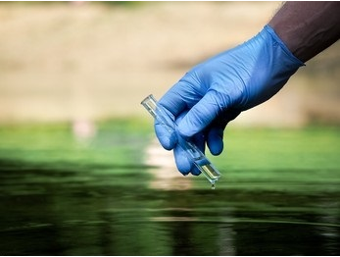Water Sensory Index Analysis

Water is a necessary resource for human life, but also the basis of human survival and development. Less than 3% of the Earth's water resources are fresh water, and less than 0.5% of the fresh water is available for drinking. In the process of human development, influenced by a variety of factors, the damage to resources and the environment is very large. Especially for water resources, the pollution is more serious, which affects people's daily life water.
Therefore, the value of the quality of drinking water testing work to further enhance, people can choose through a reasonable test to clarify the water pollution and water quality to ensure the safety of people's drinking water. The first step is to evaluate and analyze the water through the sensory and physical indicators provided by Lifeasible. We offer tests for color, turbidity, odor and taste, visible matter, pH, and more.
| Testing indicators |
Test methods |
| Chromaticity |
- Platinum-cobalt standard colorimetric method
We can use the platinum-cobalt standard colorimetric method to determine the color of water, the color is stable, and the standard color code can be used for a long time if it can be reasonably stored. Before measurement, the suspended matter in the water sample will be removed, and the water sample will not be diluted, the minimum detection color is 5 degrees, and the measurement range is 5-50 degrees. |
| Turbidity |
- Scattering method, visual turbidity method
Turbidity is an indicator that reflects the physical properties of the water source and drinking water. The turbidity of the water source is due to suspended matter or colloidal matter, or both caused by scattering or absorption behavior in the optical aspect. We use Formazine as the standard, and the scattering method to determine the turbidity of the water. The minimum detection turbidity is 0.5NTU. Visual turbidity method for the minimum detection turbidity is 1NTU. in the same conditions with Formazine standard suspension scattered light intensity and the intensity of scattered light of water samples for comparison. The greater the intensity of the scattered light, the higher the turbidity. |
| Odor and taste |
- Sniffing and tasting method
We can determine the smell and taste of water by sniffing and tasting. The general smell and taste of water can be divided into the original water samples and boiled raw water. And according to the strength is divided into no, weaker, weak, obvious, strong, very strong, and other six levels. |
| Visible to the naked eye |
- Direct observation method
We can use the direct observation method to determine the naked eye's visible matter of water. The water sample will be shaken well, in a bright place in the light direct observation, record the naked eye visible matter observed. |
| pH value |
We can use the glass electrode method to determine the pH value of water, which can be accurate to 0.01. pH is the logarithm of the inverse of the activity of hydrogen ions in water. Watercolor, turbidity, free chlorine, oxidizing agent, reducing agent, and higher salt content do not interfere with the determination.
- Standard buffer solution colorimetric method
We can use the standard buffer solution colorimetric method to determine the pH value of water, which can be accurate to 0.1. Different acid-base indicators show different colors in a certain pH range. In a series of standard buffer solutions of known pH, the same indicator is added to the water sample, and the pH value of the water sample is measured after color development. |
Lifeasible has established a system for the detection of common sensory properties and physical indicators in drinking water and its water sources, with good reproducibility and recovery, and low lower detection limits. Please contact our staff to provide you with the most suitable testing solution.
For research or industrial raw materials, not for personal medical use!
